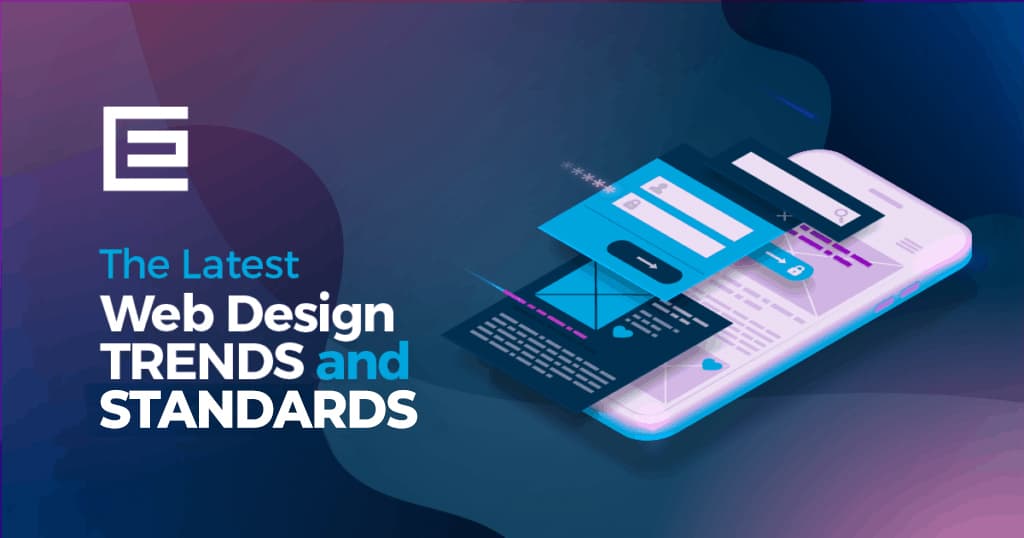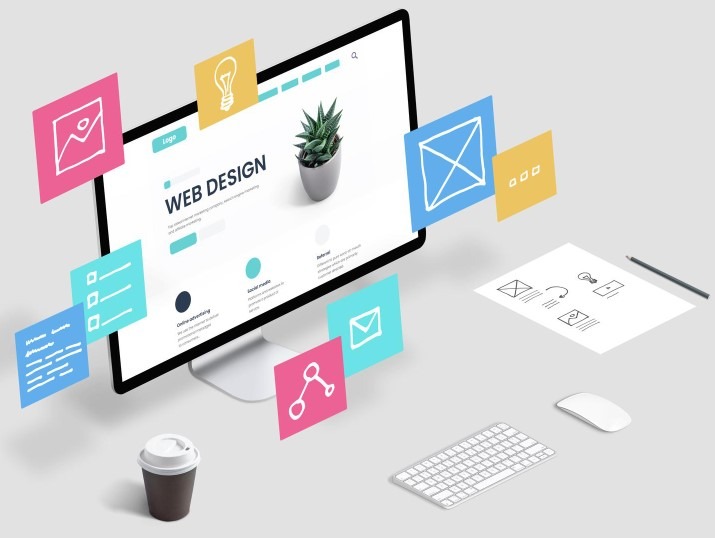Just How to Improve User Experience Through Strategic Internet Layout
In the world of digital innovation, customer experience (UX) has come to be the cornerstone of effective website design. A critical, user-centered technique, emphasizing aesthetic consistency, intuitive formats, and responsive style, can substantially boost a website's usability and allure. As we explore these concepts thoroughly, the significance of integrating user responses and the duty of UX in individual retention will also be taken a look at, inviting a much deeper understanding of this vital facet of internet design.
Understanding the Relevance of Individual Experience in Website Design
The essence of website design lies not simply in aesthetics, yet basically in the individual experience it supplies. Individual experience, or UX, refers to the general experience an individual has while engaging with an internet site or web application, specifically in terms of exactly how comfy and pleasing it is to use (Web Design In Guildford). It is an essential facet of web style, as it straight affects the users' impressions, actions, and general interaction with the website
A well-designed site with an inadequate individual experience belongs to a gorgeous building with an inadequately planned interior; it may look appealing externally, however it stops working to offer its desired objective effectively. It might discourage customers from remaining on the website, resulting in high bounce rates, low individual interaction, and eventually, failure to accomplish the website's goals. This highlights the significance of integrating user experience into the website design process right from the beginning.
Applying User-Centered Design Concepts
The application of user-centered design principles starts with understanding customer actions. This knowledge develops the basis for creating an effective interface layout. These 2 crucial elements, when masterfully incorporated, bring about a boosted customer experience on any kind of web site.

Understanding Customer Actions
Why do customers behave the means they do on websites? Customer habits is dictated by a plethora of elements, principal among them being their specific needs and preferences, prior on-line experiences, and overall internet savviness. The style of the website additionally plays a considerable role. A clean, instinctive design can guide individuals to behave in a specific way, such as leading them toward details actions or details. Conversely, a cluttered or complex design can dissuade communication and result in high bounce prices. Recognizing individual actions involves researching and analyzing these patterns and patterns. Using this expertise, web designers can develop more effective, easy to use sites that meet the demands of their target market, consequently improving individual experience.
Reliable Interface Layout

Leveraging Receptive Style for Optimum Watching
Progressing in the discourse, the interest currently moves to the importance of leveraging receptive design for ideal viewing. This includes exploring the procedure of carrying out responsive website design and comprehending its influence on individual experience. The taking place discussion aims to clarify the benefits of ideal watching and exactly how receptive design promotes it.
Applying Responsive Website Design
Using the power of receptive website design is an essential action towards boosting individual experience. To apply this efficiently, web designers need to take into consideration a variety of variables. The format ought to adapt effortlessly to numerous screen sizes, from desktop displays to smaller mobile gadgets. This needs an adaptable grid-based system, ensuring content resizes smoothly. Images should likewise be versatile, changing to fit the readily available display area without distortion. Furthermore, developers need to include media questions, enabling the website to determine the individual's gadget type and screen size. These aspects incorporated develop a receptive website design that gets used to the user's needs. While the procedure might seem complicated, the result is a much more easily accessible and user-friendly website, substantially enhancing the individual experience.
Benefits of Optimum Viewing

Moreover, responsive style can result in enhanced search engine optimization rankings, as search engines favor websites that deal with several gadgets. Last but not least, it can lower bounce prices and improve conversion prices as users are less likely to abandon websites that are easy to navigate. Therefore, optimum viewing can dramatically boost customer experience, making it a key facet of strategic web design.
Incorporating Easy Navigation and Intuitive Layouts
Reduce and why not try this out instinct in site navigating create the bedrock of individual fulfillment. If users battle to find what they are looking for, they are most likely to abandon the site and look for options.
Simple navigation food selections, breadcrumb tracks, and clickable switches direct customers with the internet site effortlessly. Uniformity in design components across pages also adds to intuitive navigation. As an example, placing the search bar or the purchasing cart symbol in the same area on pop over to this web-site every web page enables customers to locate these attributes quickly.
Moreover, an instinctive layout is one that expects customer needs. It places elements and info where customers expect them to be. This decreases the cognitive tons on customers, boosting their general experience on the internet site.
The Duty of Visual Design in User Experience
While the structure and design of a web site are considerable for individual experience, the aesthetic layout plays a similarly important role. A inconsistent or chaotic aesthetic design can puzzle customers and lead to an unfavorable individual experience. Internet designers should tactically use aesthetic layout elements to develop a harmonious and user-friendly user interface that boosts the total user experience.
Case Studies: Effective User Experience Style at work
In spite of the academic knowledge on user experience design, it obtains actual value when applied in useful scenarios. 2 noteworthy case researches illustrate this. Airbnb, a worldwide on the internet marketplace, efficiently improved their user experience by revamping their website. By concentrating on individual feedback, they developed a more intuitive, easy to use user interface that substantially enhanced reserving experiences. This brought about boosted individual complete satisfaction and conversion rates.
In another instance, the New York Times revamped their web site to focus on user experience. They optimized their website for mobile use, understanding that an expanding number of their visitors gain access to news through smartphones - Web Design In Guildford. They additionally structured their content discussion, making it much easier for site visitors to browse and find appropriate posts. The results were a substantial boost in mobile web traffic and customer engagement, showing the effectiveness of calculated website design in enhancing individual experience. These study show that practical application of user experience design can yield considerable benefits.
Verdict
In verdict, calculated website design is a vital tool in boosting user experience. By using user-centric design principles, leveraging responsive design, including instinctive navigation and designs, and taking advantage of the power of aesthetic design, services can produce internet sites that are engaging and pleasing for individuals. Reliable website design, showcased with numerous successful instance research studies, considerably raises user interaction and retention prices, confirming its important duty in electronic success.
As we discover these concepts in detail, the importance of integrating user responses and the role of UX in user retention will likewise be taken a look at, welcoming a deeper understanding of this essential element of internet layout.
It might hinder customers from remaining on the web site, leading to high bounce prices, reduced customer involvement, and inevitably, failing to attain the internet site's objectives. A messy or inconsistent visual design can lead and confuse customers to an unfavorable user experience. Internet developers must strategically use aesthetic layout aspects Learn More Here to produce a unified and user-friendly user interface that boosts the total individual experience. The results were a significant increase in mobile website traffic and customer interaction, demonstrating the efficacy of strategic internet style in improving user experience.